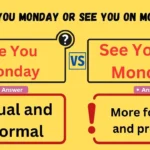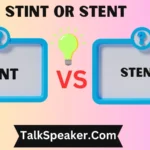When crafting formal communication, choosing the right salutation can set the tone for the entire message.
One traditional choice, “To Whom It May Concern,” has long been a staple in professional correspondence.
However, as communication norms evolve, this once-standard salutation is increasingly seen as outdated.
In this comprehensive guide, we’ll explore the evolution of professional salutations, the decline of “To Whom It May Concern,” and effective alternatives that show you’ve done your homework.
The Evolution of Professional Salutations
Historical Context
In the early days of professional correspondence, formal salutations like “To Whom It May Concern” served as a practical way to address letters when the recipient’s identity was unknown.
This formality reflected the rigid etiquette of the time, where letters were often addressed to a broader audience due to limited communication channels.
Traditional Usage
Traditionally, salutations such as “Dear Sir/Madam” or “To Whom It May Concern” were common in official documents, business letters, and formal requests. These greetings were used to ensure respect and formality, especially when the exact recipient was unknown.
Modern Shifts
As technology advanced, communication methods shifted from handwritten letters to emails and digital messages.
This shift has altered the expectations around formal greetings. The rise of personalized communication, along with the increasing emphasis on efficiency and directness, has led to a decline in the use of generic salutations.
From Traditional to Contemporary: Salutations Over Time
Formal Beginnings
Early salutations were steeped in formality, mirroring the rigid societal structures of their time. Phrases like “To Whom It May Concern” provided a respectful yet vague address, appropriate for an era when personal knowledge of recipients was less feasible.
Mid-Century Changes
The mid-20th century saw a move towards more personal and specific salutations as business communication began to emphasize efficiency.
The rise of office memos, typewriters, and more direct business interactions led to a preference for addressing specific individuals when possible.
Contemporary Trends
In the digital age, there is a strong push towards personalization. Modern communication often favors direct and specific salutations, such as addressing the recipient by name.
This change reflects broader trends in both professional and personal communication, where personalization and relevance are highly valued.
Why “To Whom It May Concern” is Becoming Obsolete
Lack of Specificity
The generic nature of “To Whom It May Concern” often comes across as impersonal.
It fails to engage the reader on a personal level and can seem as though the sender did not make an effort to identify the correct recipient.
This lack of specificity can diminish the impact of the message.
Impact on Professionalism
Using “To Whom It May Concern” might affect the perceived professionalism of your communication. In a world where personalized messages are the norm, defaulting to a generic salutation can be interpreted as a sign of laziness or lack of attention to detail.
Alternative Practices
Modern communication practices encourage specificity and personalization. Addressing the recipient by name or using a more targeted salutation demonstrates that you have done your homework and are genuinely engaged with the recipient.
Common Misuses of “To Whom It May Concern”
Overuse
Many people resort to “To Whom It May Concern” out of convenience, rather than necessity. Overuse of this salutation can make your communication seem formulaic and disengaged.
Instead of using it as a default, take the time to identify the appropriate recipient whenever possible.
Inappropriate Contexts
There are situations where “To Whom It May Concern” is particularly inappropriate. For instance, in cover letters or job applications, addressing the letter to a specific person demonstrates your genuine interest in the position and company.
Missed Opportunities
Using “To Whom It May Concern” can result in missed opportunities to make a positive impression. Personalizing your salutation can help establish a connection with the reader, making your message more memorable and impactful.
The Perceived Laziness Behind the Salutation
Professional Perceptions
In professional settings, the use of “To Whom It May Concern” is often perceived as a sign that the sender did not make an effort to tailor the message. This perception can undermine the sender’s credibility and professionalism.
Impact on Relationships
The salutation you choose can influence your professional relationships. A generic greeting may come across as disinterested or detached, while a personalized salutation can foster a sense of respect and connection.
Perception vs. Reality
While “To Whom It May Concern” might seem like a safe choice, it can convey a lack of effort and attention to detail. It’s important to weigh how your salutation might be perceived by the recipient and choose one that reflects your professionalism and commitment.
Alternatives That Show You’ve Done Your Homework
Personalized Greetings
Using a recipient’s name is a simple yet effective way to personalize your message. This approach demonstrates that you have taken the time to research and identify the appropriate person, which can enhance the impact of your communication.
Research-Based Salutations
When addressing formal communication, take the time to find out who the correct contact person is. Resources such as company websites, LinkedIn profiles, and professional directories can help you identify the right individual.
Examples of Effective Alternatives
Here are some examples of personalized salutations:
- “Dear Mr. Smith,”
- “Hello Dr. Johnson,”
- “Greetings Ms. Lee,”
These alternatives show that you have made an effort to address the recipient directly and respectfully.
Modern Communications: Finding the Right Salutation
Digital Communication Trends
In today’s digital world, salutations often need to adapt to the medium. For instance, email communication may benefit from a more casual approach compared to formal letters. Understanding these nuances can help you choose the most appropriate salutation.
Industry-Specific Salutations
Different industries have varying expectations for salutations. For example, tech startups may favor a more informal greeting, while traditional industries like finance might require a more formal approach. Adapting your salutation to industry norms shows awareness and respect for professional standards.
Cultural Sensitivity
When communicating across cultures, be mindful of different norms and expectations. In some cultures, formal greetings are crucial, while others may prefer a more relaxed approach. Researching and understanding these differences can help you craft a respectful and effective salutation.
Appropriate Occasions for “To Whom It May Concern”
When It’s Acceptable
Despite its decline in popularity, there are still scenarios where “To Whom It May Concern” may be appropriate. For example, in formal notifications or general inquiries where the recipient’s identity is truly unknown, this salutation can serve as a placeholder.
Special Cases
Consider using “To Whom It May Concern” in situations like:
- General information requests
- Legal or administrative documents
- Official announcements
Balancing Formality and Personalization
Even when using “To Whom It May Concern,” strive for a balance between formality and personalization. Consider including additional details that show your understanding of the context and the importance of the message.
Etiquette and Personalization in Professional Messaging
Best Practices
When crafting professional messages, adhere to best practices for etiquette and personalization. These include addressing the recipient appropriately, using correct titles and names, and ensuring your message is clear and respectful.
Personalization Techniques
Effective personalization involves more than just using the recipient’s name. It also includes tailoring the content of your message to the recipient’s role, interests, and needs. This approach shows that you’ve put thought into your communication.
Building Professional Relationships
Thoughtful salutations and personalized messages contribute to stronger professional relationships. They help build rapport, demonstrate respect, and foster positive interactions, which can benefit your professional network and opportunities.
Implementing Alternatives to “To Whom It May Concern”
Practical Tips
Here are some practical tips for implementing alternatives:
- Research Thoroughly: Use available resources to find the correct contact person.
- Be Specific: Choose a salutation that reflects the recipient’s role and the context of your message.
- Review and Adapt: Adjust your salutation based on the recipient and communication medium.
Templates and Examples
To assist with implementation, here are some sample templates:
- Cover Letter: “Dear Hiring Manager,”
- Inquiry Email: “Hello Ms. Taylor,”
- Formal Request: “Dear Customer Service Team,”
Review and Adaptation
Regularly review and adapt your salutation practices to stay current with communication trends and professional expectations. This ongoing effort ensures your messages remain effective and engaging.
Conclusion
Choosing the right salutation is crucial for effective professional communication. While “To Whom It May Concern” has its place, modern communication practices increasingly favor personalized and specific salutations.
By understanding the evolution of salutations, recognizing the limitations of generic greetings, and embracing alternatives, you can enhance the professionalism and impact of your messages.
For further reading on effective professional communication, explore resources on business communication etiquette and personalization in professional messaging.

As an experienced English teacher, I’m Jessica Thompson, here to make grammar and vocabulary simple and fun. Join me on TalkSpeaker as we explore the language together, one lesson at a time!



